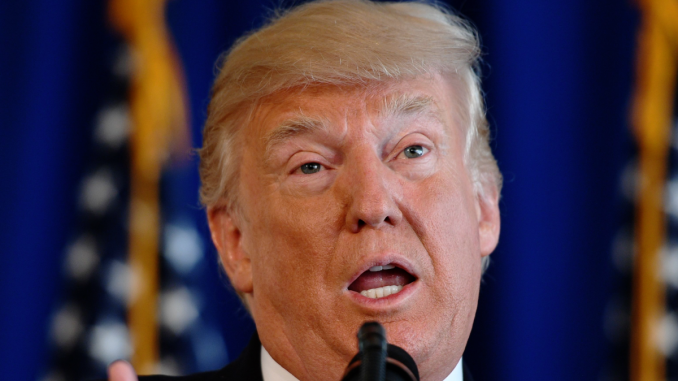
With international trade being of particular interest to the Trump Administration, I thought it would be prudent to provide my readers with an interesting glimpse at how American trade with its key trading partners has changed over the past two decades and how this has impacted U.S. workers. For the purposes of this posting, I will be using foreign trade data provided by the United States Census Bureau for consistency.
Let’s start by looking at America’s top four goods trading partners by full year going back to 2007:
2017 – China, Canada, Mexico, Japan, Germany
2016 – China, Canada, Mexico, Japan, Germany
2015 – China, Canada, Mexico, Japan, Germany
2014 – Canada, China, Mexico, Japan, Germany
2013 – Canada, China, Mexico, Japan, Germany
2012 – Canada, China, Mexico, Japan, Germany
2011 – Canada, China, Mexico, Japan, Germany
2010 – Canada, China, Mexico, Japan, Germany
2009 – Canada, China, Mexico, Japan, Germany
2008 – Canada, China, Mexico, Japan, Germany
2007 – Canada, China, Mexico, Japan, Germany
In most years, these four trading partners are responsible for just over half of all international trade in goods. If we go all the way back to 2004, we find that China was America’s number three trading partner, three short years after China was granted status under the World Trade Organization.
Let’s look at more details on America’s largest trading partners; Canada, China and Mexico and the history of goods trade balance with each nation:
1.) Canada:
As you can see, Canada’s goods trade surplus with the United States is relatively small when compared to that of China and Mexico and shrank markedly in 2008 – 2009 when it dropped from a deficit of $78.3 billion in 2008 to $21.5 billion in 2009. Since that time, it has fluctuated between $10.9 billion and $36.4 billion.
2.) China:
China’s trade surplus with the United States grew rapidly after December 2001 when China (under the prodding of then President William J. Clinton) became a member of the World Trade Organization. Since China joined the WTO, its trade surplus with the United States has grown from $83.1 billion in 2001 to a high of $375.2 billion in 2017. What is even more concerning is that, for the month of January 2018, China’s trade surplus with the United States hit a new record high of $35.92 billion as shown here:
This is well more than Canada’s trade surplus with the United States for an entire year.
3.) Mexico:
Mexico’s trade surplus with the United States grew very rapidly after the signing of the NAFTA agreement in 1994. You will note that in 1994, the United States actually ran a trade surplus of $1.3 billion with Mexico; this rapidly declined to a peak trade deficit of $74.8 billion in 2007. Since then, Mexico’s trade surplus with the United States has remained within a range of between $47.4 billion in 2009 to $71.1 billion in 2017, the second highest trade surplus in the past 24 years.
This trade data shows us that, by a wide margin, China is responsible for the lion’s share of the U.S. trade deficit in goods which has looked like this since 1999:
Obviously, the importation of goods from other nations has had a significant impact on one sector of the United States economy in particular as shown on this graphic:
At its current level of 12.555 million workers, U.S. manufacturers are now employing 6.998 million fewer workers than they did at the peak in June 1979. This has had a significant impact on wage growth for those Americans that remain employed in the manufacturing sector as shown here:
With this data in mind, it is pretty obvious why Donald Trump’s rally cry of “Make American Great Again” resounded so profoundly in the former industrial heartland of the United States and why international trade has become a focus of his administration.
Click HERE to view more.
You can publish this article on your website as long as you provide a link back to this page.

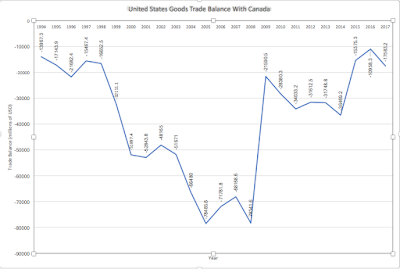

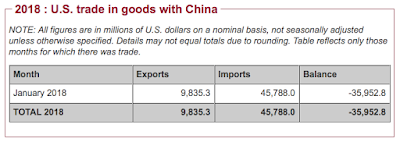
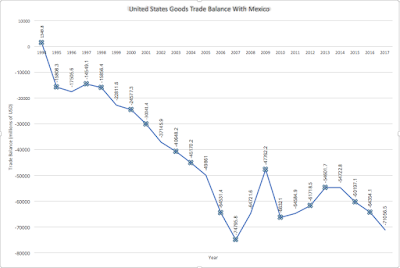
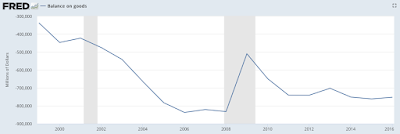
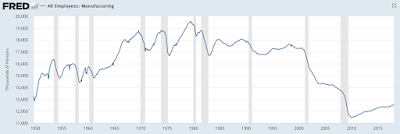
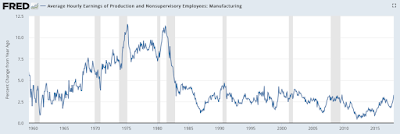
Be the first to comment